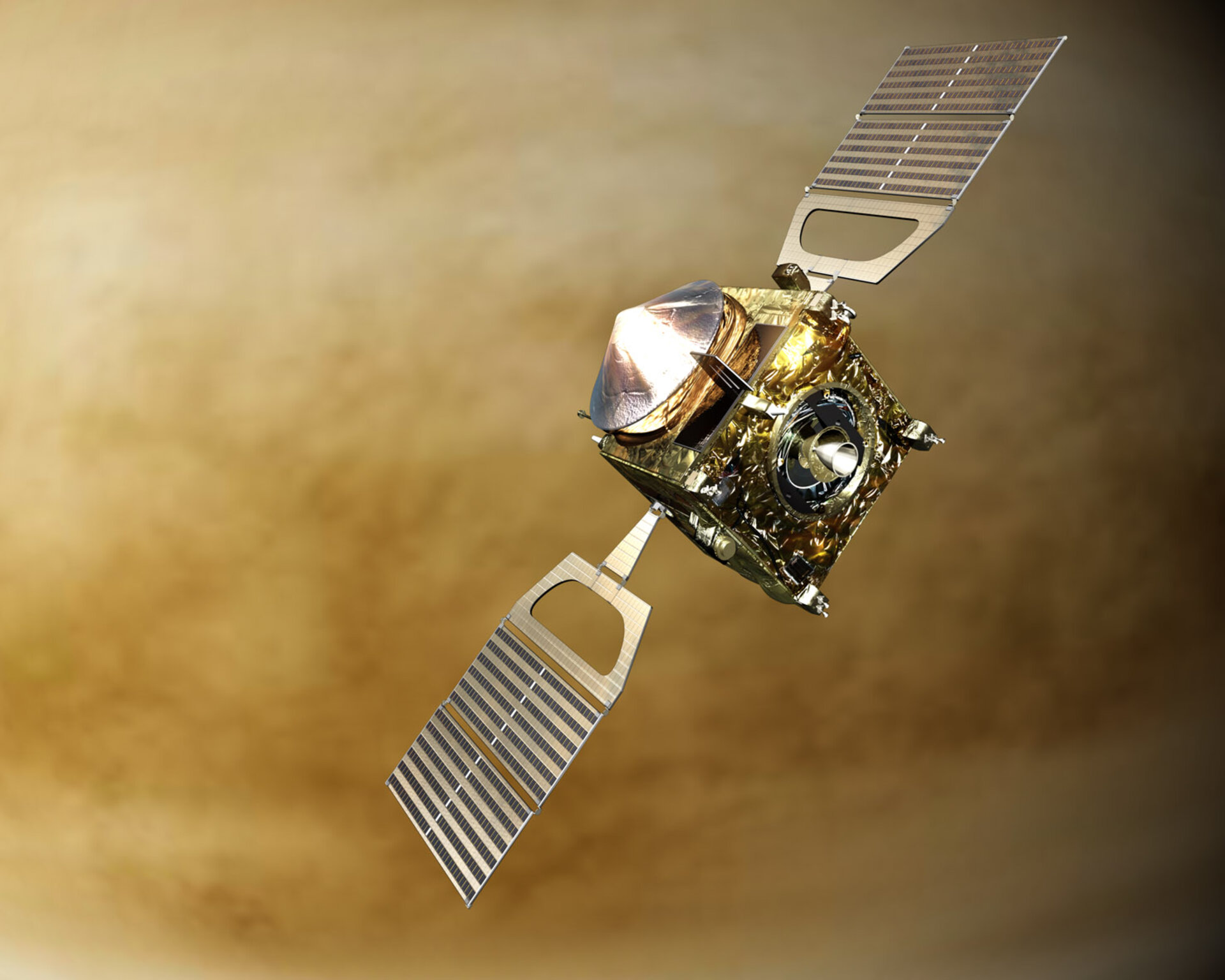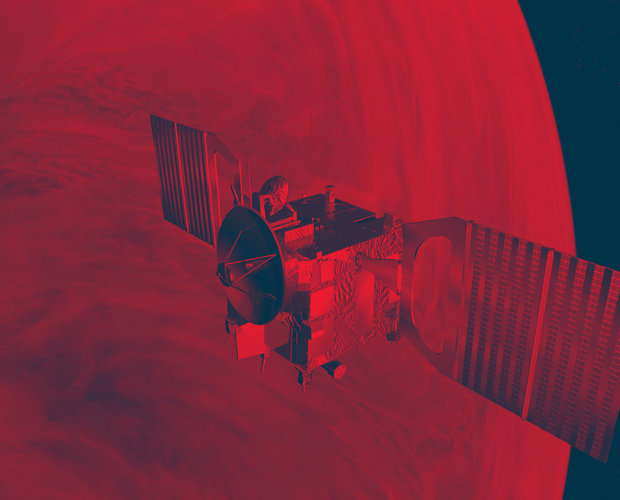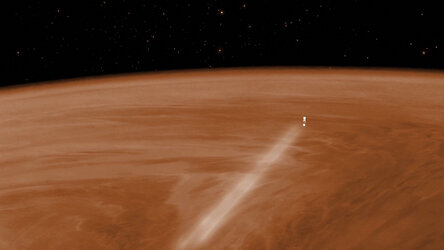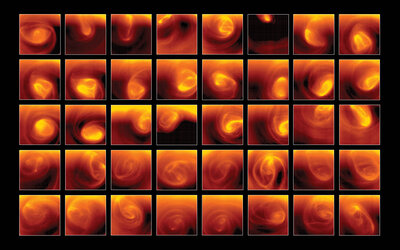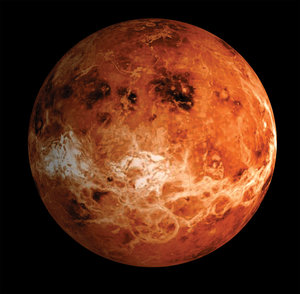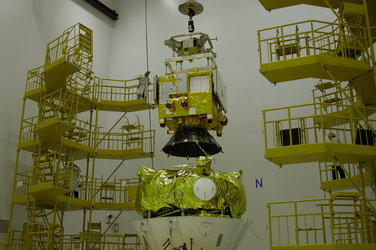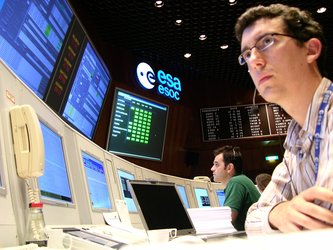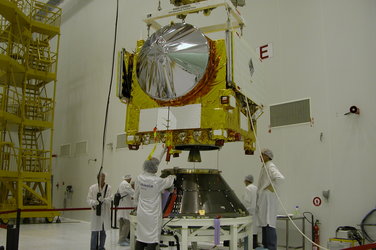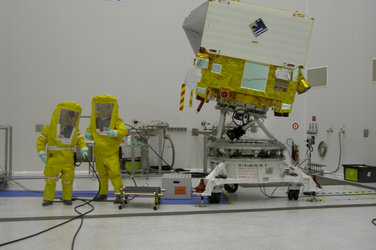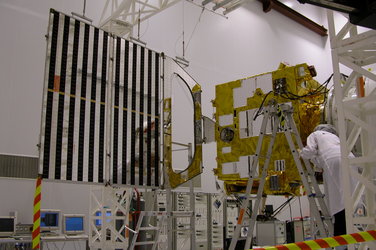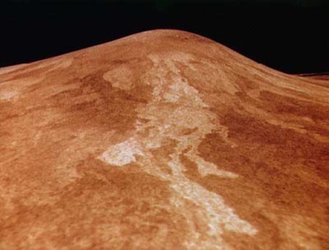Venus Express set for launch to the cryptic planet
ESA INFO 01-2005 (Update)
A dense curtain of mysteries surrounding Venus, the hot and hazy sister planet to Earth, awaits to be opened after the launch of Venus Express, the next planetary probe of the European Space Agency.
On Wednesday, 9 November 2005, the sky over the Baikonur Cosmodrome, Kazakhstan, will be illuminated by the blast from a Soyuz-Fregat rocket carrying this precious spacecraft aloft.
The celestial motion of the planets in our Solar System has given Venus Express the window to travel to Venus on the best route. In fact, every nineteen months Venus reaches the point where a voyage from Earth is the most fuel-efficient. To take advantage of this opportunity, ESA has opted to launch Venus Express within the first possible ‘launch window’, which opened on 26 October and will close on 24 November this year.
Again, due to the relative motion of Earth and Venus, plus Earth’s daily rotation, there is only one short period per day when it is possible to launch, lasting only a few seconds. The launch is now planned for November at 04:33 Central European Time (CET) (09:33 in Baikonur).
Venus Express will take only 155 days, a little more than five months, to reach Venus. Then, in April 2006, the adventure of exploration will begin with Venus finally welcoming a spacecraft, a fully European one, more than ten years after humankind paid the last visit.
The journey starts at launch

One of the most reliable launchers in the world, the Soyuz-Fregat rocket, will set Venus Express on course for its target. Soyuz, procured by the European/Russian Starsem company, consists of three main stages with an additional upper stage, Fregat, atop. Venus Express is attached to this upper stage.
The injection of Venus Express into the interplanetary trajectory which will bring it to Venus consists of three phases. In the first nine minutes after launch, Soyuz will perform the first phase, that is an almost vertical ascent trajectory, in which it is boosted to about 190 kilometres altitude by its three stages, separating in sequence.
In the second phase, the Fregat-Venus Express ‘block’, now free from the Soyuz, is injected into a circular parking orbit around Earth heading east. This injection is done by the first burn of the Fregat engine, due to take place at 04:43 CET.
At 05:55 CET, about one hour and twenty minutes after lift-off and after an almost full circle around Earth, the third phase starts. While flying over Africa, Fregat will ignite for a second time to escape Earth orbit and head into the hyperbolic trajectory that will bring the spacecraft to Venus.
After this burn, Fregat will gently release Venus Express, by firing a separation mechanism. With this last step, the launcher will have concluded its task.
Plenty of ground activities for a successful trip
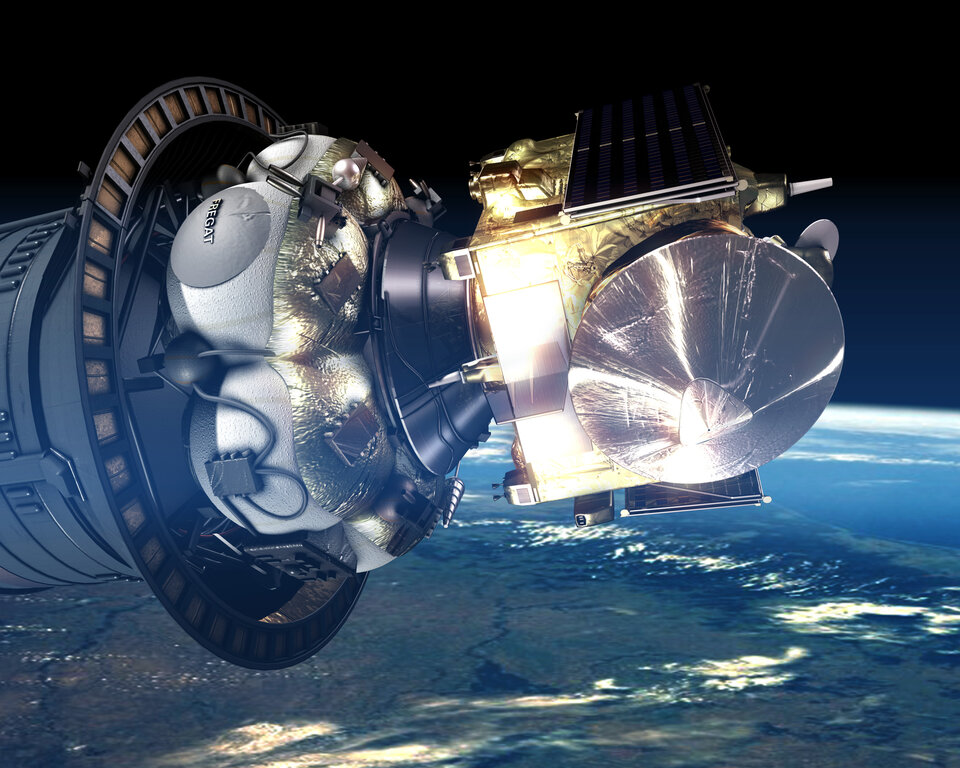
Once separated from Fregat at 06:10 CET, Venus Express will be awoken from its dormant status by a series of automatic on-board commands, such as the activation of its propulsion and thermal control systems, the deployment of solar arrays and manoeuvres to ‘orient’ itself in space.
From this moment the spacecraft comes under the control of ESA’s European Space Operations Centre (ESOC) for the full duration of the mission. The flight control team co-ordinate and manage a network of ESA ground stations and antennas around the globe, to regularly communicate with the spacecraft.
The New Norcia station in Australia and the Kourou station in French Guiana will in turn communicate with Venus Express in the initial phase of the mission. The first opportunity to receive a signal and confirm that the spacecraft is in good health will be the privilege of the New Norcia station about two hours after launch.
In this early phase of the mission, once ESOC has taken full control of the satellite, the spacecraft will be fully activated. Operations will also include two burns of the Venus Express thrusters, to correct any possible error in the trajectory after separation from Fregat.
On 11 November, the newly inaugurated Cebreros station in Spain, with its 35-metre antenna, will start to take an active part in ground network operations to relay information between ESOC and the spacecraft. During the cruise phase and once the spacecraft has arrived at Venus, Cebreros will be the main information relay point between ESOC and Venus Express.
Reaching for Venus
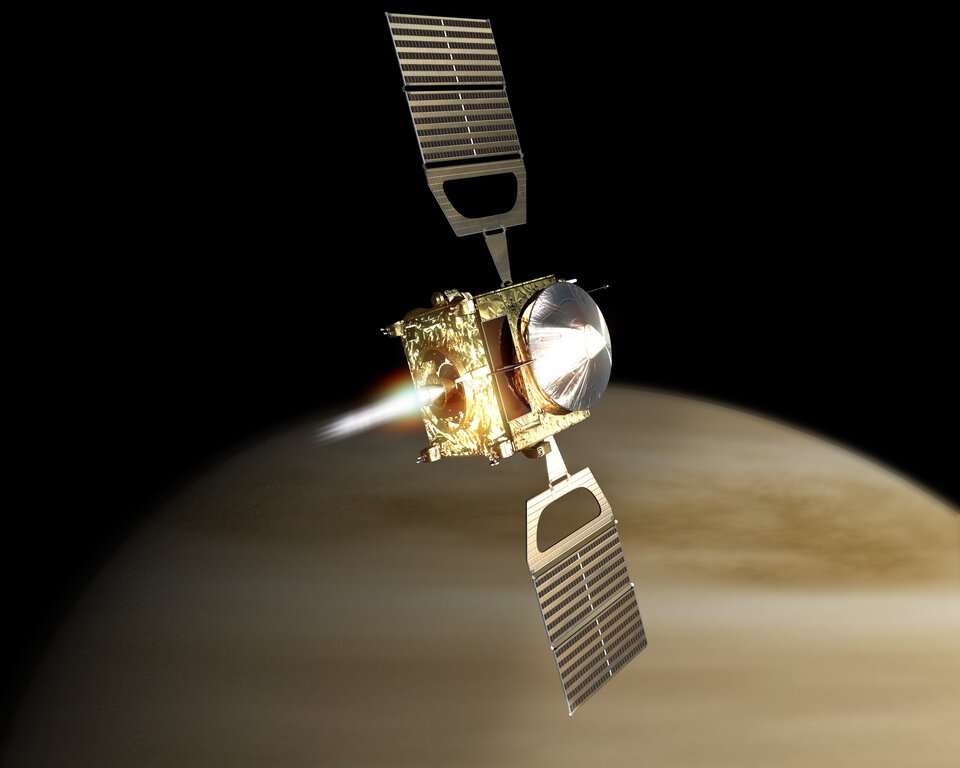
During its 155-day journey to Venus, Venus Express will cover about 400 million kilometres at an average speed of some 28 kilometres per second with respect to the Sun. After an initial commissioning period, the spacecraft will cruise peacefully with no specific operations planned, besides routine checks of its subsystems and scientific instruments, and minor trajectory corrections if needed.
The thrills will start again on 11 April 2006, at the end of the cruise, when the spacecraft will have to perform a delicate manoeuvre to brake and be captured into orbit around Venus. The energy required for Venus Orbit Insertion (VOI) is very high, and will need the main engine to fire (burn) for approximately 51 minutes.
This manoeuvre will place the spacecraft in a highly elliptical ‘capture’ orbit around the planet, with a pericentre (closest point to the Venusian surface) of 250 kilometres near the north pole, and an apocentre (furthest distance from the surface) at 350 000 kilometres roughly at the south pole.
At the end of this initial 10-day ‘capture’ orbit, Venus Express will ignite its main engine again. About six days later, after a series of other minor orbit adjustments, the spacecraft will have been positioned in its final operational orbit. This will be an elliptical polar orbit, lying between 250 and 66 000 kilometres above Venus, and will last 24 hours.
The capture orbit could already provide the first opportunity for scientific observations, but the nominal science phase will start on 4 July 2006, after the spacecraft and instruments commissioning phase has been concluded.
The set of seven instruments on board Venus Express represents an unprecedented diagnostic package to study the thick and enigmatic atmosphere of Venus - an atmosphere so dense and so intimately coupled with the planet’s surface, that studying it will help provide clues about the features, status and evolution of the entire planet.
Note to editors
Venus Express is an almost identical twin spacecraft to Mars Express, but adapted to operate in the hot and harsh environment around Venus. It was built by EADS Astrium, Toulouse (France), leading a group of industrial partners throughout Europe. Completing the spacecraft took less than four years from concept to launch, making it the fastest-built ESA scientific satellite ever.
Besides the spacecraft manufacturing and testing, industry will still be involved during the mission on a collaboration and consultancy basis for the ESA Venus Express Project team, led by the Project Manager, and for the Venus Express ground control team, led by the Spacecraft Operations Manager.
On 4 July 2006, when the nominal science phase begins, the Venus Express Project Manager will hand over responsibility for the mission to an ESA Venus Express Mission Manager, leading the Venus Express Science Operations Centre (VSOC) in ESA’s European Space Research and Technology Centre (ESTEC) in the Netherlands. The VSOC performs the routine planning for scientific observations, in co-ordination with the Project Scientist and the instrument Principal Investigators.
ESA’s investment in Venus Express amounts to about 220 million Euros, covering development of the spacecraft, launch and operations. This figure also includes 15 million Euros for instrument development, including support to several research institutes (Principal Investigators) for building the instruments. Venus Express is one of a family of missions in which costs are shared, the others being Rosetta and Mars Express.
For more information:
ESA Media Relations Division
Tel: +33 (0) 1 53 69 71 55
Fax: +33 (0) 1 53 69 76 90
Don McCoy, ESA Venus Express Project Manager
E-mail: Don.McCoy @ esa.int
Hakan Svedhem, ESA Venus Express Project Scientist
E-mail: Hakan.Svedhem @ esa.int


